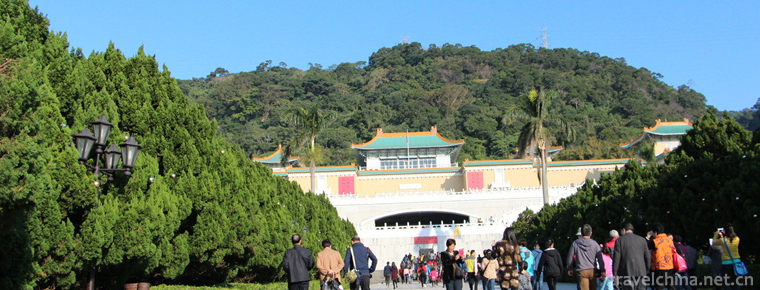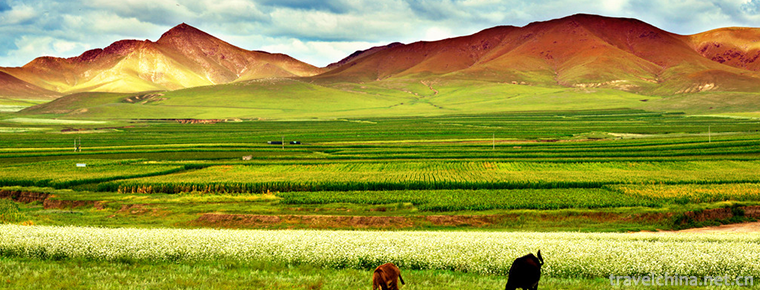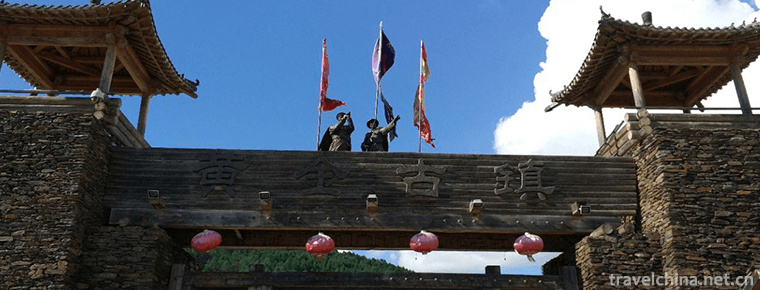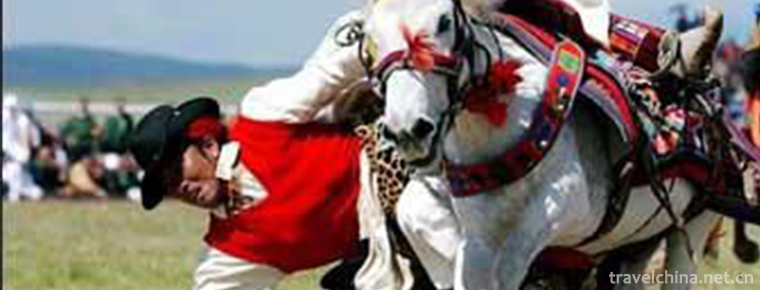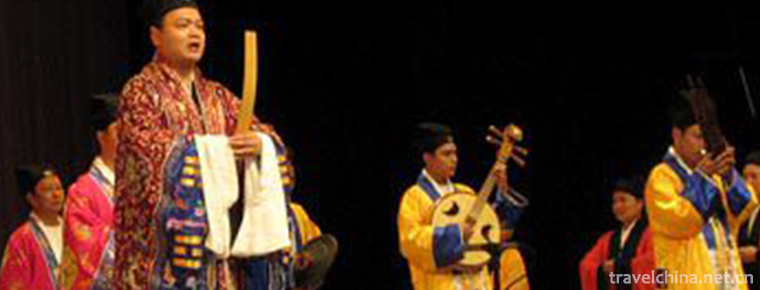Nanjiang Grand Canyon
Nanjiang Grand Canyon is located in Kaiyang County in the middle of Guizhou Plateau, 54 kilometers away from Guiyang, the capital of Guizhou Province. Characterized by the typical and magnificent scenery of the Cass Canyon and the various types of waterfall communities with thousands of postures, it is full of beautiful scenery and scenery.
The Canyon is more than 40 kilometers long and has a steep peak with a depth of 398 meters. The results of scientific investigation by relevant experts show that the stratum of Nanjiang Canyon is old and the valley is deep. It is a typical landscape of low-mountain canyon, which is very magnificent and beautiful. There are more than 80 natural landscapes and more than 40 waterfalls in various postures in the canyon. They are located in Luxiang Waterfall of Xiaonanjiang River, with a drop of more than 150 meters. The park scenic spot has been developed for 18.4 kilometers. Tourists can drift along the river in jasper-like waters, walk along cliff trestles, shady paths, and cross typical karst virgin forests. Tibetan chieftain monkeys on the cliffs, rhesus monkeys are climbing and playing, ducks and ducks swim freely in the river, fish can be seen in groups, birds and egrets fly on the river, wild and interesting... Nanjiang Grand Canyon has abundant natural resources to establish an eco-tourism demonstration area. Every night, the national singing and dancing culture makes you linger and forget to return, unique barrel plant essence steam bath, natural spring swimming pool, vivid Samuni Buddha, Maitreya Buddha and the Wanfo Mountain composed of numerous Buddha statues, outdoor barbecue, cross-river slip make you more relaxed and happy.
Scenic spot Award
In 2006, it was jointly selected as one of the "Eight Sceneries of Guiyang" by experts and citizens, known as the "Karst Eco-Museum".
In 2008, Nanjiang Grand Canyon Scenic Area won the National AAAA Tourist Area and the "Best Green Ecological Scenic Area in China".
In 2008, it was awarded "Top Ten Charming Tourist Spots of Guizhou in 2008" and "Top Ten Charming Tourist Spots of Guizhou in 2009".
Resource characteristics
Nanjiang Canyon Scenic Spot is characterized by typical development, magnificent karst Canyon scenery and various types of waterfall communities with different postures. Its magnificent scenery and meteorological features make it a scenic spot with high aesthetic value, scientific research value and tourism value.
The karst area is characterized by high mountains, steep rocks, deep valleys, magnificent landscapes, well-preserved vegetation and over 80% forest coverage.
There are many kinds of Chinese herbal medicine, animals and plants, and the hydrological landscape is also very beautiful, such as Jinzhong Waterfall, Ganoderma Lucidum Waterfall and other foggy waterfalls and hanging springs. The main scenic spots are Yisong Sanhe Xiangna Waterfall, Tianwaitian Waterfall, Jinzhong Waterfall, Waterfall Pavilion Waterfall, Dropping Guanyin, Wukong worship Guanyin, Qilong into the sea, Zhuge Liang taught plan, Shimen ghosts, girls bathing, Tongguyan, elephant nose water absorption, peach. Yuandong and other 26 scenic spots above national level 4.
Causes of formation
climate
Landform of Nanjiang Grand Canyon
Kaiyang is a subtropical monsoon climate with an average annual precipitation of 1197 mm. The content of CO2 and organic acid in water is high and karstification is strong. Geologically, the Nanjiang Grand Canyon is located on a torsional fault zone. Groundwater dissolves when it moves downward along rock fissures or falling water caves, forming underground caves and underground rivers, in which broken rocks and debris are cemented by calcium carbonate to form karst breccia. When the rock at the top of the cave collapses, underground rivers emerge on the surface, forming steep canyons.
Crustal rise
As the crust rises, the groundwater level decreases with the river cutting down, and new underground caves and underground rivers are formed. When the rocks on the top of the caves collapse again, the underground rivers appear on the surface and the canyons become steeper. In the geological history of the Ladder Rock area, the underground cave groups and cave halls of different sizes are well developed, and after many collapses in different geological periods, THE KARST DEPRESSIONS surrounded by mountains are formed.
weathering
Because of the large number of carbonate rocks exposed in the scenic area, the soil developed on the weathering crust is shallow, and there is no obvious layer of non-zonal soil - lithogenic limestone soil. This kind of soil has high calcium ion content, good aggregate structure and neutral to slightly alkaline reaction, but the soil layer is shallow, water storage and water retention is poor, so the soil is dry and water-deficient, and the vegetation habitat is very bad. In order to adapt to this special habitat, the vegetation has the characteristics of xerophyte, lithology and calcium-like. In the low mountain areas with thicker weathering crust or exposed sandy shale, zonal soils, such as acidic yellow soil, are distributed on which are acid-loving plants such as Pinus massoniana, Chinese fir and Osmunda mandshurica.
Animals and plants
vegetation
Landscape Plants-Lycoris radiata
The scenic area has dense vegetation, high coverage and abundant vegetation types, most of which are secondary forests with strong subtropical primitiveness. On the slopes of both sides of the valley, there are strong native limestone mountain evergreen, deciduous broad-leaved mixed forest and bamboo forest; on the floodplains periodically submerged by rivers and on the banks of rivers, there are river bank shrubs dominated by mother trees of narrow-leaved mosquitoes, Ficus longifolia, Holly green river beaches and six-channel trees; and in the yellow soil distribution areas above the valley, there are artificial forests dominated by Pinus massoniana. Coniferous forests. There are 414 species of vascular plants belonging to 275 genera and 116 families. Among them, there are many kinds of rare plants, such as Taxus chinensis, beech, carnation, red bean, cedar, ginkgo and so on.
birds
There are 122 bird species recorded in the scenic spot, accounting for 28.2% of the total bird species in the province, belonging to 14 orders and 35 families. There are 13 rare birds under the second-level protection of the state, namely, Mandarin ducks, kites, sparrowhawks, pine eagles, common twins, white-tailed owls, red falcons, red-bellied pheasants, white-crowned pheasants, grass twins, spotted birds, brown forest twins and grey forest twins. Among them, mandarin duck and white-crowned pheasant are the most important. Not only because this area is the breeding ground for Mandarin ducks, but also in central Guizhou, these two rare birds only found so many populations here. There are 87 species of ornamental birds in this area. Their delicate and beautiful shape, colorful feathers and graceful and changeable song complement each other with mountains, rivers and forest caves and reflect each other, forming a dynamic landscape in the scenic area. There are 96 species of insectivorous birds, accounting for 78.7% of the total birds in the region. They play an important role in controlling the number of insects and maintaining the ecological balance in the region.
Mammals
There are 36 species of mammals in the scenic area, belonging to 8 orders and 15 families. Among them, eight species of national second-class protected rare animals, including hyena, gazelle, macaque, Tibetan chieftain monkey, civet, musk deer, leopard cat and pangolin, are more common in the region.
insect
In terms of ornamental insects, the fluorescent rocks formed by fireflies on the rocks near the Huihua Falls are unique landscapes and eco-tourism resources in the karst canyon. Because of the abundant host plant resources of butterflies in the area, most butterflies in central Guizhou are distributed in the scenic areas, and also have great ornamental value.
Special food
Farmer's Stewed Hooves
The dining characteristics of Nanjiang Grand Canyon not only absorb the characteristics of Guizhou cuisine which are characterized by "hot alcohol, sour and fresh, fragrant and thick taste", but also because Yangxian County, the scenic spot, is the home of selenium-rich agricultural products in China. It is the best choice for tourists to supplement selenium through selenium-rich agricultural products diet. In Nanjiang Grand Canyon, eat selenium-rich noodles, drink selenium-rich tea, and taste selenium-rich meat. Local chickens, earth eggs, farm pigs, wild vegetables and Nanjiang small fish, which are provided by surrounding farmers, provide eco friendly organic food for the tourists.
Nanjiang Flower Fish
Nanjiang Flower Fish: There is a kind of fish in the Nanjiang River. It is small in size and its scales show color. So it is called Nanjiang Flower Fish. It grows in the Nanjiang River. Because it is not polluted, it tastes very delicious. The local people have special sour soup and all kinds of dense condiments. It is cooked in earthpot. Its soup is milky white, tastes delicate and meat is tender. It is a special feature that Nanjiang tourism has to taste. Delicious food.
Selenium enriched Bacon: the selenium enriched bacon is made of local farmers' good breed pig. Its meat is tender, thin, and thin and interfirm. It is slaughtered every year on the eve of the Chinese calendar in December. It is divided into small pieces. It is broiled with liquor, salt, soy sauce, anise, cinnamon, prickly ash, and sand kernel, and then roasted for ten days. Then it is cleaned before eating, and then steam for 30 minutes. Rich taste, fat but not greasy.
Traffic information
Train
Take the train to Guiyang first. There is a bus to Kaiyang at the first passenger station in Guiyang City. It runs 86 kilometers and lasts 2 hours. The fare is 20 yuan. It's convenient to have one train in 20 minutes. To go to Nanjiang Grand Canyon, you can take a passenger train in Kaiyang County. The early bus runs at 8:30 a.m. for an hour and a half to the gate of the scenic spot. After entering the gate, there is still 3 kilometers to go to the canyon pier by motorcycle, at 5 yuan per person. Of course you can also walk. Scenic area can be drifting (in the drifting section), can also walk, walking roads are mostly stack-like, the entire scenic area of more than ten kilometers of road, five or six hours can easily and comfortably complete the journey.
Guiyang North-Kaiyang Railway Station is now open. It takes 26 minutes to get off at Nanjiang Railway Station.
Self driving
Self-driving: Self-driving can take the line of "Guiyang - Xintianzhai - Paddy Field - Yangchang - Racecourse - Sentinel - Nanjiang Grand Canyon" for about 1.5 hours. You can also go up Guizun Expressway. At Jiuchang Station, there is a road sign shortly after crossing Kaiyang County Town. The road ahead is to Weng'an. Turn left and go straight to Nanjiang Grand Canyon.
Backpackers
Backpacker: Backpacker can take a bus to Nanjiang Grand Canyon at the tourist station opposite Qianling Park for 20 yuan per person. You can return that day.
Guiyang Direction Tourists
In Guiyang Tourist Distribution Center (Yan'an West Road Old Passenger Station), take the scenic spot through train, the fare is 88 yuan, including the scenic spot ticket, scenic spot sightseeing bus and round trip fare. Ride time: 9:00 punctual, 17:00 punctual return.
Zunyi Direction Tourists
Along Guizhou-Zunyi Expressway - Guiyang Circumferential Expressway (under the exit of Xintianzhai) - Guikai Second-Class Expressway to the scenic spot; along Guizhou-Zunyi Expressway to long - Kaiyang - Nanjiang (about 100 kilometers); through Zunyi - Nanbai - Shangji - Nanmudu (Xiamachang) - Kaiyang - Nanjiang route to the scenic spot.
Tourist route
One-day Tour of Nanjiang Grand Canyon
Take an air-conditioned bus to the scenic area at 9:00 a.m. and drive along Guikai Highway to the gate of the scenic area (1 hour's drive). Upon arrival, you can change to a battery car in the scenic spot to see the countryside scenery, water pavilions, a line of days and so on. After arriving at Laziyan Resort for Chinese food and Chinese food, visit Nanjiang Grand Buddha, Stone Forest, Flying Dragon Trestle Road, Monkey Baiguanyin, Huaguoshan, Mysterious Face, Nanjiang God, Sphinx, Tianwaitian Waterfall, Caoqiao, Jinzhong Waterfall, Wanzhu Waterfall, Junjungyan Rock and other scenic spots to Luoguchong (about 2H visit time). Return to the gate of the scenic area after the trip.
One-day Drifting Tour in Nanjiang Canyon
Take an air-conditioned bus to the scenic spot at 9:00 a.m. and drive along Guikai Highway (1 hour drive) to the gate of the scenic spot. After lunch, get the drifting ticket, change the drifting clothes, and do warm-up training. Launching for safe, thrilling and stimulating drifting. Drift all the way to Gongguchong, or half way to Ladder Rock Resort. The drifting time is 2-3H. On the way, you can visit the scenic spots such as waterfall pavilion, line sky, Nanjiang Buddha, Shishang Forest, Feilong Trestle Road, monkey worship Guanyin, Sphinx figure, Tianwaitian Waterfall, Cable Bridge, Jinzhong Waterfall, Pearl Curtain Waterfall, General Rock and so on.











-
National Palace Museum Taipei
Taipei national the Imperial Palace Museum, also known as the Taipei the Imperial Palace and Zhongshan Museum. It is one of the three major museums in China and one of the largest comprehensive museum.
Views: 261 Time 2018-10-12 -
Ming Ming Dynasty Tombs Scenic Area
Ming Tombs, World Cultural Heritage, National Key Cultural Relics Protection Units, National Key Scenic Spots, National AAAAA Tourist Scenic Spots..
Views: 192 Time 2018-11-24 -
Bayinbrook Grassland Scenic Area
Bayinbrook grassland: formerly known as Yuledus grassland, Zhuledus grassland, Yuludus grassland, because it is mainly located in Xinjiang Bayinguoling Mongolian Autonomous Prefecture .
Views: 86 Time 2019-01-02 -
Taipinggou Golden Town
The scenic spot of Taipinggou Gold Town is based on the history of gold mining in Taipinggou in late Qing Dynasty. It deeply excavates the historical culture and characteristic tourism resources.
Views: 445 Time 2019-01-18 -
Jockey Club
The horse race held every June in the Tibetan calendar is a grand traditional festival in the northern Tibetan grassland, also known as the "Grassland Festival", which lasts from 5 to 15 day.
Views: 179 Time 2019-06-12 -
Taoist Music of Xuanmiaoguan in Suzhou
The Taoist music of Suzhou, represented by the Taoist music of Xuanmiaoguan, belongs to the Zhengyi Taoist music, and is an integral art with the performing process of Zhai Yin Fa. It sings different .
Views: 126 Time 2019-06-17 -
Cognitive Method of Life and Disease in Traditional Chinese Medicine
Cognitive method of life and disease of traditional Chinese medicine, one of traditional Chinese medicine, is declared by the Chinese Academy of Traditional Chinese Medicine and one of the national in.
Views: 157 Time 2019-08-03 -
Jintang Yunding mountain scenic spot
Jintang Yunding mountain is located in the middle section of Longquan Mountain in Jintang County, Chengdu. The scenic spots include Yunding mountain, Hantan ancient ferry, Jintang small Three Gorges of Tuojiang River.
Views: 203 Time 2020-11-05 -
Suining tertiary industry
In 2019, Suining achieved a total retail sales of consumer goods of 63.191 billion yuan, an increase of 10.7% over the previous year. In terms of business location, retail sales in urban areas reached 46.171 billion yuan, an increase of 10.7%; in rural areas.
Views: 340 Time 2020-12-16 -
Neijiangs first industry
In 2019, the sown area of grain crops in Neijiang is 309600 ha, an increase of 0.3% over the previous year; the sown area of oil crops is 79900 ha, an increase of 0.4%; and the sown area of vegetables is 78100 ha, an increase of 2.3%. The total grain output .
Views: 298 Time 2020-12-16 -
Hydrology in Yibin
The water system in Yibin belongs to the external water system, with the Yangtze River as the main vein, with many rivers, high density and abundant water. Jinsha River and Minjiang River join to form the Yangtze River, which runs through the nor.
Views: 323 Time 2020-12-18 -
Mineral resources in Yibin
There are 44 kinds of mineral resources discovered and evaluated in Yibin, 305 mineral areas. Among the 23 kinds of proved reserves with E-class reserves, there are 6 kinds of large-scale mining value .
Views: 134 Time 2020-12-18
